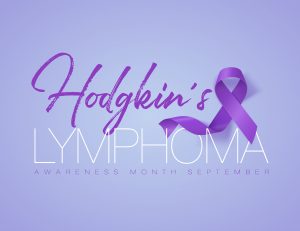
The exact cause of Hodgkin lymphoma is not known. Genes and viral infections may increase a child’s risk of Hodgkin lymphoma. Conditions that are linked to Hodgkin lymphoma are listed below. But because Hodgkin lymphoma is so rare, the risk is still very low.
- Epstein-Barr virus, which causes mononucleosis (mono)
- HIV, the virus that causes AIDS
- Having a brother or sister with Hodgkin lymphoma
Symptoms can occur a bit differently in each child. They can include:
- Painless swelling of the lymph nodes in the neck, underarm, groin, or chest
- Trouble breathing (dyspnea)
- Coughing
- Chest pain
- Fever
- Night sweats
- Tiring easily (fatigue)
- Loss of appetite
- Weight loss
- Itching skin (pruritus)
- Frequent viral infections such as colds, flu, sinus infections
Your child’s healthcare provider will ask about your child’s medical history and symptoms. They will examine your child. Your child may have tests such as:
- Blood and urine tests. Blood and urine are tested in a lab.
- Chest X-ray. The chest X-ray shows the heart, lungs, and other parts of the chest.
- Lymph node biopsy. A tissue sample is taken from the lymph nodes and checked with a microscope for cancer cells. A lymph node biopsy is needed to diagnose Hodgkin lymphoma.
- CT scan. This may be done for the abdomen, chest, and pelvis. A CT scan uses a series of X-rays and a computer to make detailed pictures of the body.
- MRI scan. An MRI uses large magnets, radio waves, and a computer to make detailed pictures of the body. This test is used to check the brain and spinal cord. Or it may be used if an X-ray or CT scan results are unclear.
- Positron emission tomography (PET) scan. For this test, a radioactive sugar is injected into the bloodstream. Cancer cells use more sugar than normal cells so the sugar will collect in cancer cells. A special camera is used to see where the radioactive sugar is in the body. A PET scan can sometimes spot cancer cells in different areas of the body, even when other tests can’t see them. This test is often used in combination with a CT scan, which is called a PET/CT scan.
- Bone marrow aspiration or biopsy. Bone marrow is found in the center of some bones, and it’s where blood cells are made. A small amount of bone marrow fluid may be taken, which is called aspiration. Or solid bone marrow tissue may be taken. This is called a core biopsy. Bone marrow is usually taken from the hip bone. This test may be done to see if cancer cells have reached the bone marrow.
Part of diagnosing cancer is called staging. Staging is the process of seeing if cancer has spread and where it has spread. Staging also helps to decide the treatment. There are different ways of staging used for Hodgkin lymphoma. Talk with your child’s healthcare provider about your child’s cancer stage. One method of staging Hodgkin lymphoma is the following:
- Stage I. The cancer is in a single lymph node region or organ.
- Stage II. The cancer is in 2 or more lymph node regions on the same body side. Or cancer has spread from one lymph node into a nearby organ.
- Stage III. The cancer is in lymph node regions on both sides of the body and includes which organs and areas are involved.
- Stage IV. The cancer is in the lymphatic system and has spread to other body areas (metastasis).
Staging also includes whether a child has specific symptoms and includes:
- Asymptomatic (A). No fever, night sweats, or weight loss.
- Symptomatic (B). Symptoms of fever, night sweats, or weight loss.
Most children with Hodgkin lymphoma are treated successfully and cured. Treatment will depend on the stage and other factors. Hodgkin lymphoma can be treated with any of the below:
- Chemotherapy. These medicines kill cancer cells or stop them from growing, and they may be given into the vein (IV), injected into tissue, or taken by mouth.
- Radiation therapy. These are high-energy X-rays or other types of radiation, and they are used to kill cancer cells or stop them from growing.
- High-dose chemotherapy with a stem cell transplant. Young blood cells (stem cells) are taken from the child or someone else. A large amount of chemotherapy medicine follows this, and this causes damage to the bone marrow. After the chemotherapy, the stem cells are replaced.
- Monoclonal antibodies. This is a type of targeted therapy that kills cancer cells without harming healthy cells.
- Supportive care. Treatment can cause side effects. Medicines and other treatments can be used for pain, fever, infection, nausea, and vomiting.
- Clinical trials. Ask your child’s healthcare provider if any treatments that may work well for your child are being tested.
Key points about Hodgkin lymphoma in children
- Hodgkin lymphoma is a type of cancer in the lymphatic system.
- Most children with Hodgkin lymphoma are treated successfully and cured.
- Symptoms of Hodgkin lymphoma include painless swelling of the lymph nodes in the neck, underarm, groin, or chest, trouble breathing, night sweats, fever, and tiredness.
- A lymph node biopsy is needed to diagnose Hodgkin lymphoma.
- Treatment may include medicines, radiation, stem cell transplants, and surgery.
0 Comments